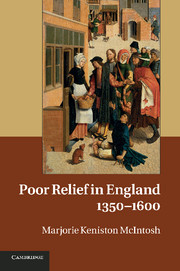Book contents
- Frontmatter
- Contents
- Acknowledgements
- Notes on conventions and online resources
- Abbreviations
- 1 Introduction
- Part I Late medieval and early Tudor patterns
- Part II Profound change during the early Reformation period
- Part III Intensified problems and altered approaches in the later sixteenth century
- Part IV Responding to the problems
- Appendices included in the printed volume
- References
- Index
Online appendices
Published online by Cambridge University Press: 05 January 2012
- Frontmatter
- Contents
- Acknowledgements
- Notes on conventions and online resources
- Abbreviations
- 1 Introduction
- Part I Late medieval and early Tudor patterns
- Part II Profound change during the early Reformation period
- Part III Intensified problems and altered approaches in the later sixteenth century
- Part IV Responding to the problems
- Appendices included in the printed volume
- References
- Index
Summary
Sources
This project draws upon information from certain specific sources, intended to provide the most uniform possible coverage of the country: (1) the listing of institutions in David Knowles and R. N. Hadcock, Medieval Religious Houses, England and Wales, 311–409, which relies heavily on Rotha Mary Clay, The Medieval Hospitals of England, plus some additional information Clay provided for their study; (2) all volumes of the Victoria County Histories as published through early 2009; and (3) the thirty-two Reports of the Charity Commissioners for England and Wales, published in forty-four volumes as part of the Parliamentary Papers between 1819 and 1842, arranged by county, hundred, and place, which attempted to document all previous and current charities, including ones that had long since died out. The database does not include institutions for which testators left founding instructions in their wills, but we have no confirmation that they were ever actually set up. To avoid distortion in favor of those counties whose institutions have been examined in greater detail, the database does not include additional information from local studies. The latter usually identify more houses than are listed in the sources above (due to use of wills and inclusion of houses that were intended but not founded). The institutions included here therefore constitute a subset of the full number.
Dates of founding or first reference
For each institution, a variable was entered for “date of foundation” together with a qualifier.
Each institution was then placed within a decade based upon the date and qualifier.
For those foundings described only in terms of a century, not a specific date or decade, “ascribed numbers” were used for the graphs of the number of foundings per decade and number of houses in existence. (See section 4 below.)
The dates for many of the houses that had already closed by 1350 are even more uncertain than for houses that continued later.
- Type
- Chapter
- Information
- Publisher: Cambridge University PressPrint publication year: 2011



